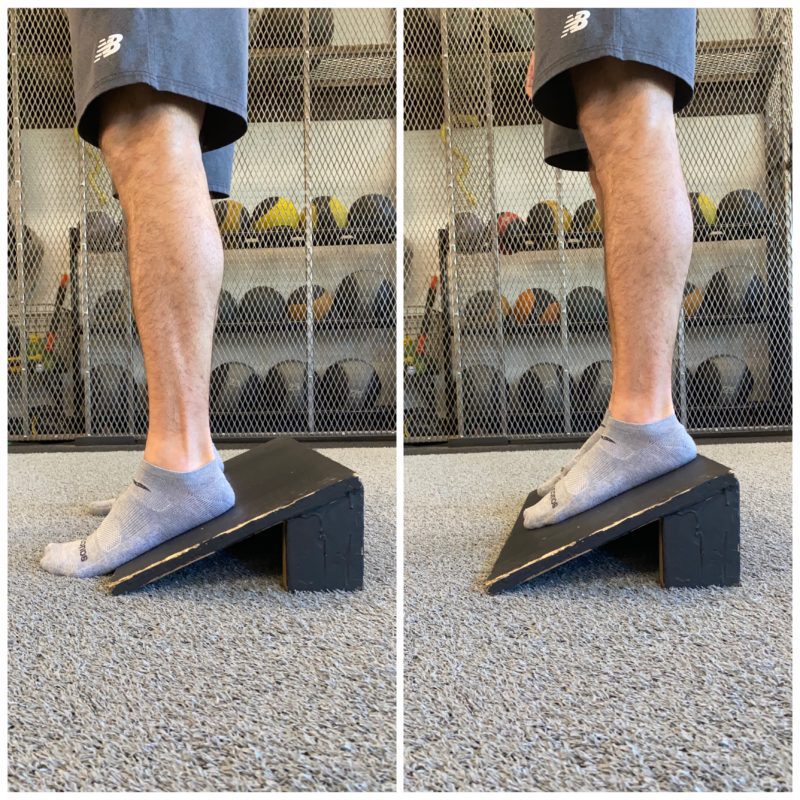Using heel wedges or slant boards for squats is not a new thing, however a lot of people get it wrong as to how to use them properly. They are primarily used for squats, but can be used a lot of other exercises including RDL’s, split squats, and pushups. To be clear, this article will review their use in squats alone. This is the first installment of likely a long series where I talk about how people should “stop doing that and start doing this” with things I see in the weight room and exercise selection or setup. This falls in line with my previous post about the best single leg exercise for muscle and strength.
Two Different Setups with Slant Boards For Squats

To the untrained eye, the two pictures above probably have very little difference between the two. One person could say that it “likely doesn’t matter if your toes are on the board or on the ground.” This is the biggest misconception that haunts me when I see performance coaches, personal trainers, or those working out with the slant board.
Don’t get me wrong: I previously also didn’t care until I learned the why. The purpose behind slant boards for squats is get a greater range of ankle dorsiflexion when squatting. This has the same goal as olympic lifting shoes have with their heel height. The biggest difference between the two pictures, where the toes rest, also provide huge context to where energy gets transferred and what happens at the foot when standing on a slant boards for squats.
Your foot is a pivotal segment during the squat and also during gait, or the cycle of walking or running. There is a difference when the toes on the slant board are on the floor and on the board. When the toes are on the ground, the foot starts to enter a late phase mechanic: propulsion. The foot becomes supination to create what is called the “Windlass” mechanism. If the foot breaks this supination to enter more pronation or forward motion, we loose stability of the foot and increase the change of injury – particularly under load.
If you’re like me and have flat feet already, it’s probably not the best that when I squat, my foot can lose tension when squatting down and in return have a different squat on each repetition. The other factor behind late phase mechanics is the role that those toes have during push-off. The big toe is responsible for the final phase of pushing off when we talk about walking or running. It has a harder time to push through the floor when at the bottom of a squat where you want to have more pronation to get you up.
We have a completely different picture when we have the whole foot on top of the slant board itself. When it’s all there, the foot starts supinated and can pronate to load the body to push off from the bottom of the squat. The big toe has a reference to then push off when at the bottom of the squat. The benefit behind slant boards for squats is then fully optimized. You can also probably see less active muscle tone on the calf when compared to the picture where the toes are on the ground and off the slant board.
This is only one piece to the puzzle when perfecting a squat. You learn a thing or two when you have a small list of injuries over the past decade of lifting that were a combination of accidents and self-inflicted injuries. I would highly recommend people using a slant board for squats so that more people feel their legs working more than their hips or lower back. Research has also shown increased VMO (a quad muscle) activation with a higher slant boards for squats when compared to motion on a flat surface.
Most athletes also should squat with a slant board and then perform their ballistic movements without a board. It helps anyone get into better positions regardless of injury history. Let’s all now please stop doing that, and start using slant boards for squats.